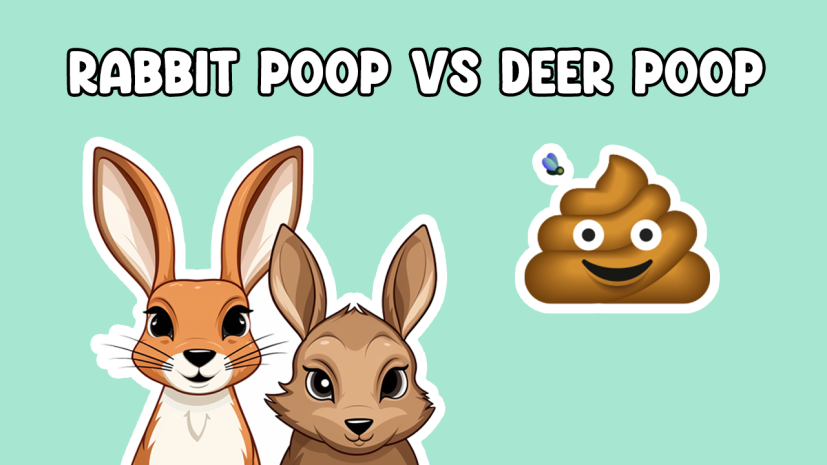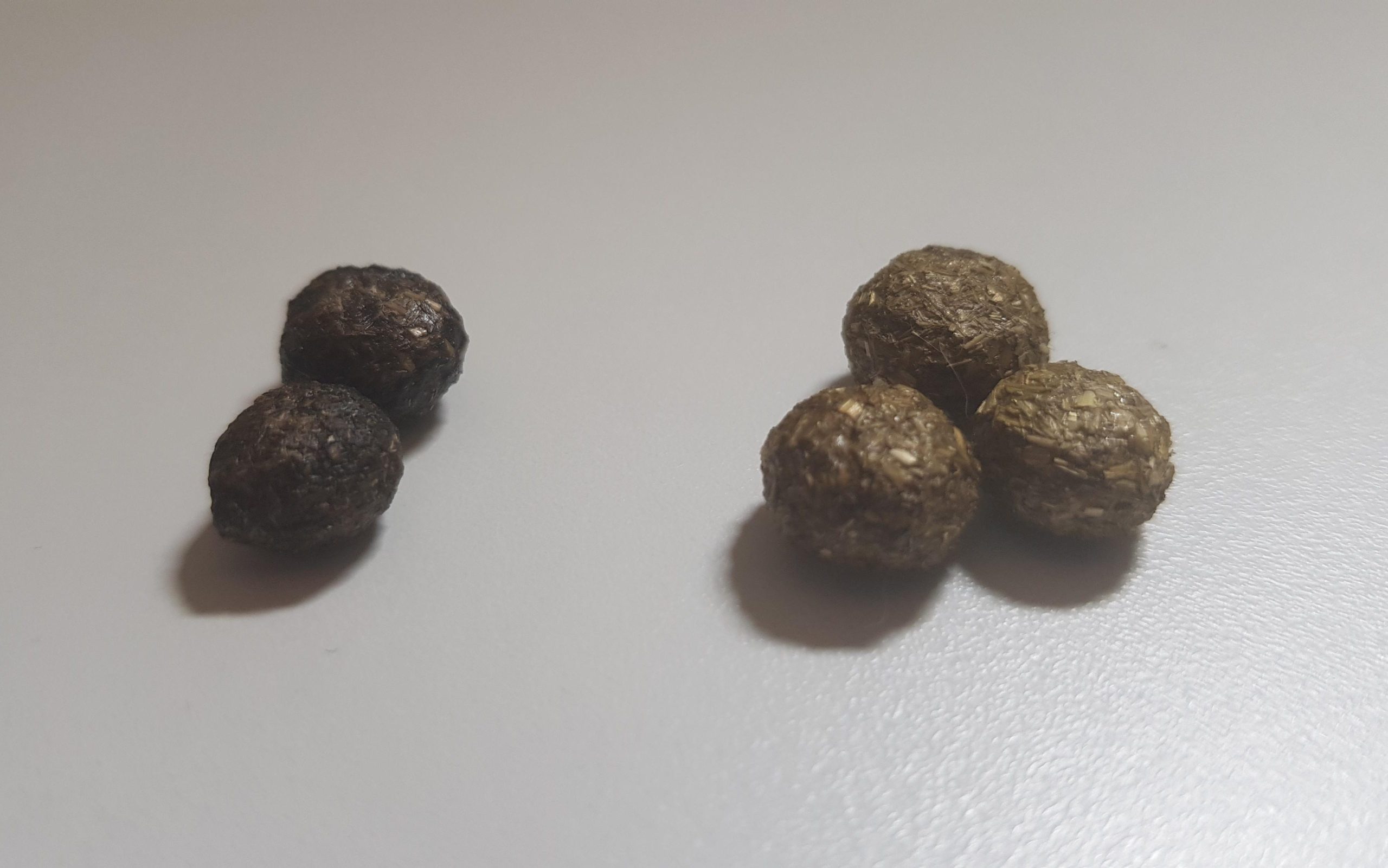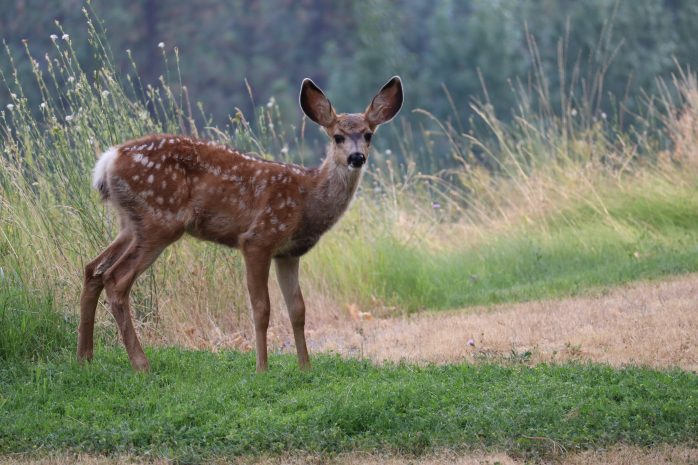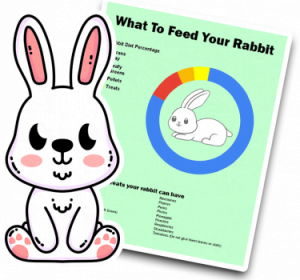
Rabbit poop and deer poop are two common animal droppings in outdoor environments. While they may appear similar at first glance, the two have distinct differences.
This article explores the disparities in appearance, size, odor, and other characteristics of rabbit poop and deer poop. Additionally, we will tackle what does rabbit poop look like and what does deer poop look like? By understanding these differences, you’ll be able to identify the droppings more accurately and gain insights into the animals that produce them.
The table below provides a comprehensive outline of the key differences between rabbit poop and deer poop.
| Aspect | Rabbit Poop | Deer Poop |
|---|---|---|
| Appearance | Small, round pellets | Oval-shaped clumps |
| Size | Approximately 1/4 inch (6 mm) in diameter | About 1/2 inch (13 mm) in length |
| Color | Brown or black | Dark brown or black |
| Texture | Smooth surface with a shiny coating | Rough surface, often containing plant material |
| Quantity | Usually found in groups or clusters | Typically scattered in small quantities |
| Location | Near rabbit burrows, gardens, or lawns | Often found near wooded areas or trails |
| Odor | It helps fertilize plants and enrich the soil | It contains a mix of plant material and browse |
| Composition | Consists mainly of plant material | Contains a mix of plant material and browse |
| Nutrient Content | Relatively high in nitrogen | Provides nutrients for the soil and vegetation |
| Environmental Impact | Helps fertilize plants and enrich the soil | Plays a role in seed dispersal |
Rabbit poop is characterized by its small, round pellet-like shape. These droppings are typically around 1/4 inch (6 mm) in diameter.
On the other hand, deer poop appears as oval-shaped clumps, measuring approximately 1/2 inch (13 mm) in length. These distinctions in appearance are key to identifying the source of the droppings.


When it comes to size, there is a noticeable disparity between rabbit droppings and deer droppings. Rabbit poop tends to be smaller, while deer droppings are larger and tend to be more oval-shaped.
The variation in size can be attributed to the contrasting diets and digestive systems of these two animals.
The color of rabbit poop and deer poop also differs. Rabbit droppings are commonly brown or black, blending in with the natural hues of the environment. On the other hand, deer droppings appear dark brown or black, similar to rabbit poop but often slightly larger.
If a rabbit has a particularly healthy diet of dried grass & hay, their scat may have a golden tint to it which is considered the holy grail of poop quality among many rabbit owners.
The texture is another distinguishing factor between rabbit droppings and deer droppings. Rabbit poop has a smooth surface with a shiny coating. In contrast, deer droppings have a rough surface and are often observed to contain remnants of plant material, such as leaves or twigs.
These textural differences indicate the animal’s digestive processes and the type of vegetation they consume.
How rabbit poop and deer poop are found in the environment also varies. Rabbit droppings are typically discovered in groups or clusters, while deer droppings are more commonly scattered in small quantities.
This discrepancy in distribution can provide insights into these animals’ behavior and habitat preferences.
To increase your chances of finding rabbit poop, focus your search near rabbit burrows, gardens, or lawns. Rabbits are known to leave their droppings close to their habitats.
On the other hand, if you’re looking for deer droppings, explore areas near wooded regions or trails. Deers frequent such locations, leaving their droppings as they move through the landscape.
Both rabbit poop and deer poop have distinct odors, although they differ in intensity and character. Rabbit droppings emit a mild, earthy scent that may be difficult to detect unless you’re in close proximity.
In contrast, deer droppings have a pungent, musky odor that can be more pronounced, especially in concentrated areas. The smell of these droppings can be an important clue when identifying the responsible animal.
The composition of rabbit poop and deer poop sheds light on the animals’ diets. Rabbit droppings consist primarily of plant material, including grass, leaves, and other vegetation.
On the other hand, deer droppings contain a mix of plant material and browse, which refers to woody plant parts such as twigs and shoots. These distinctions in composition reflect the varied feeding habits of these animals.
Both rabbit poop and deer poop play essential roles in the ecosystem by contributing nutrients to the soil and vegetation. Rabbit droppings are relatively high in nitrogen, which helps fertilize plants and enrich the soil. Similarly, deer droppings provide essential nutrients that support vegetation growth and contribute to the ecosystem’s overall health. These droppings serve as natural fertilizers and aid in maintaining a balanced ecosystem.

While rabbit poop and deer poop have similarities in their environmental impact, they also have unique contributions to the ecosystem. Rabbit droppings, with their higher nitrogen content, promote plant growth and aid in soil fertility.
On the other hand, deer droppings play a role in seed dispersal, as undigested seeds often pass through their digestive systems. Both types of droppings contribute to the natural cycles within their respective habitats.
Yes, rabbit poop is an excellent natural fertilizer for gardens. Its high nitrogen content promotes healthy plant growth and enriches the soil. However, it’s recommended to compost the droppings before using them to ensure proper decomposition and nutrient release.
No, rabbit droppings are not harmful to humans. However, practicing good hygiene when handling animal waste is essential. Avoid direct contact with droppings, wear gloves if necessary, and wash your hands thoroughly afterward to minimize potential risks.
Deer droppings can attract other animals, particularly smaller herbivores that feed on vegetation. The undigested plant material in deer droppings serves as a food source for squirrels and rabbits.
These droppings can indicate the presence of deer and other wildlife in an area.
To differentiate between rabbit poop and deer poop, you can look at the droppings’ size, shape, and location. Rabbit droppings are smaller and often found in groups near rabbit burrows or gardens. Deer droppings are larger and scattered, especially near wooded areas or trails.
If you find an abundance of rabbit or deer droppings in your yard, it could indicate their frequent presence there. Consider implementing deterrents or protective measures to prevent plant damage or landscaping damage. Also, consult with local wildlife authorities or pest control experts for further guidance on effectively managing these situations.

By entering your email address you agree to receive emails from Cottontailclub. We'll respect your privacy and you can unsubscribe at any time.